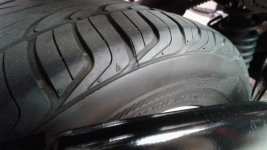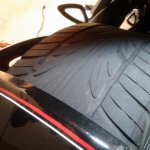Dray
New member
This probably is a dumb question but I will ask anyway. Just when should you consider
changing your tire or tires for a new one?
My rear tire is down to the wear bars and there is still a goodly even amount of thread
all the way across the rear tire. Not a thin or bare spot on the tire. When you are down to
wear bars, does that mean change now or change when the bars and thread are getting thin?
I have a new tire ready to go on, just do not wish to throw away a tire that has a lot of miles
left to go. Current tire is the OEM tire and has almost 11,000 miles on it.
Any knowledge/experience or opinions greatly appreciated.
Dray:yes::yes::yes::yes:
changing your tire or tires for a new one?
My rear tire is down to the wear bars and there is still a goodly even amount of thread
all the way across the rear tire. Not a thin or bare spot on the tire. When you are down to
wear bars, does that mean change now or change when the bars and thread are getting thin?
I have a new tire ready to go on, just do not wish to throw away a tire that has a lot of miles
left to go. Current tire is the OEM tire and has almost 11,000 miles on it.
Any knowledge/experience or opinions greatly appreciated.
Dray:yes::yes::yes::yes:


